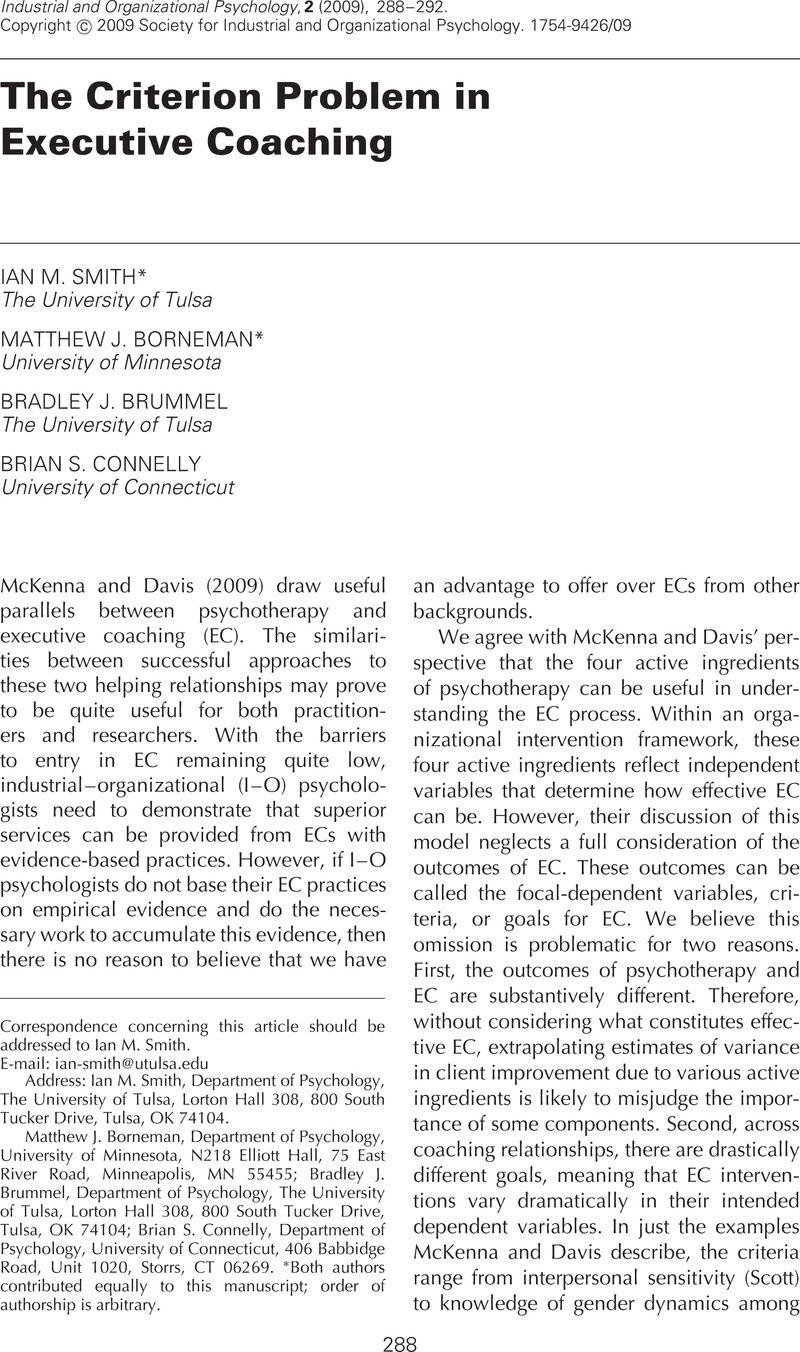Crossref Citations
This article has been cited by the following publications. This list is generated based on data provided by Crossref.
McKenna, D. Douglas
and
Davis, Sandra L.
2009.
What Is the Active Ingredients Equation for Success in Executive Coaching?.
Industrial and Organizational Psychology,
Vol. 2,
Issue. 3,
p.
297.
Tesluk, Paul
and
Kudisch, Jeffrey
2010.
Advancing Executive Coaching.
p.
431.
Smither, James W.
2011.
Can Psychotherapy Research Serve as a Guide for Research About Executive Coaching? An Agenda for the Next Decade.
Journal of Business and Psychology,
Vol. 26,
Issue. 2,
p.
135.
Smith, Ian M.
and
Brummel, Bradley J.
2013.
Investigating the role of the active ingredients in executive coaching.
Coaching: An International Journal of Theory, Research and Practice,
Vol. 6,
Issue. 1,
p.
57.
Skews, Rachael
2020.
How to design and conduct quantitative coaching intervention research.
The Coaching Psychologist,
Vol. 16,
Issue. 1,
p.
41.





